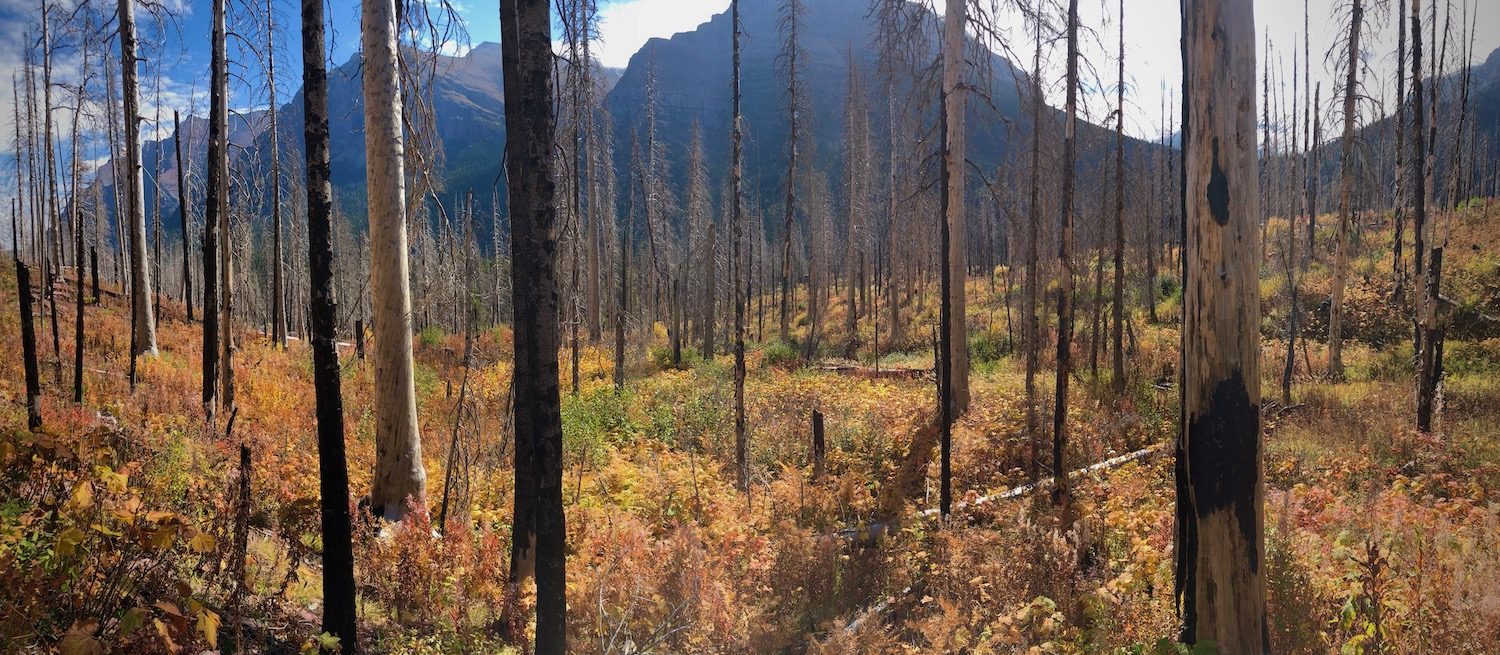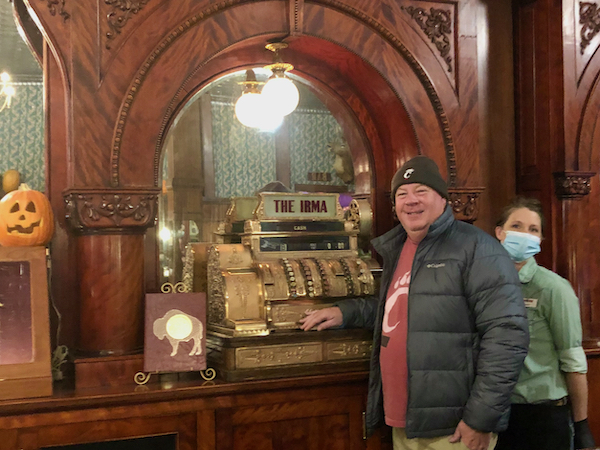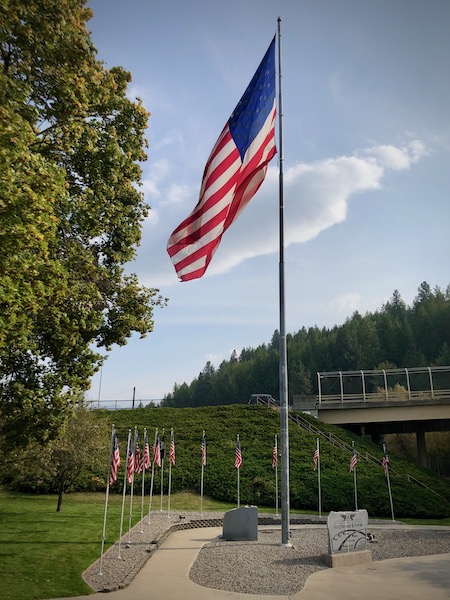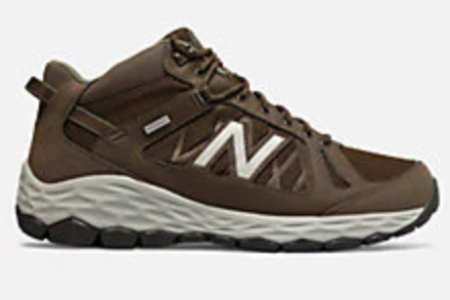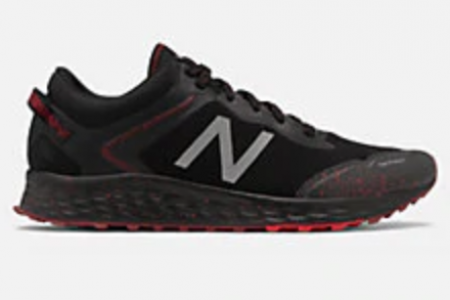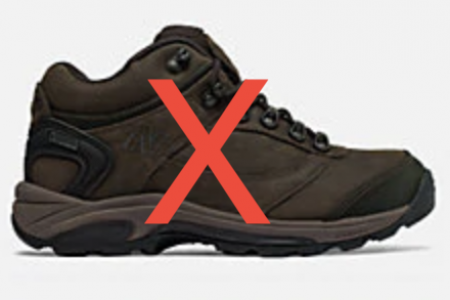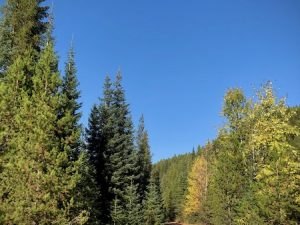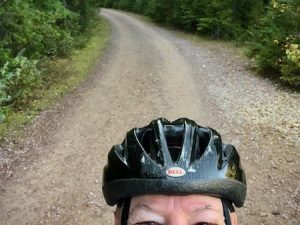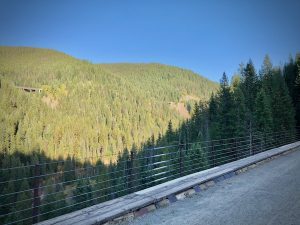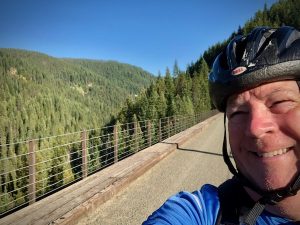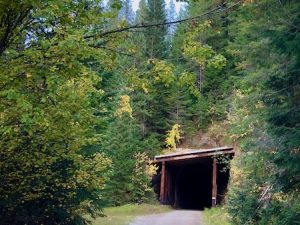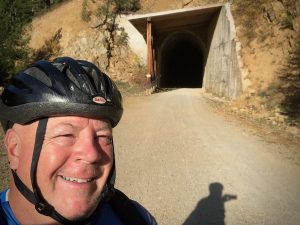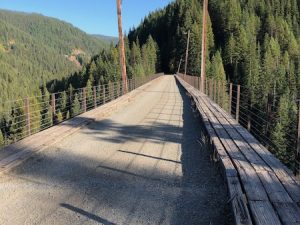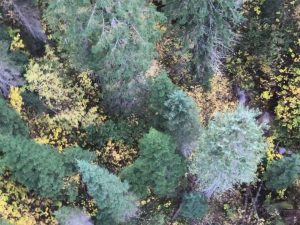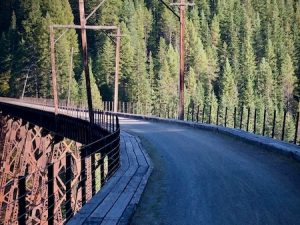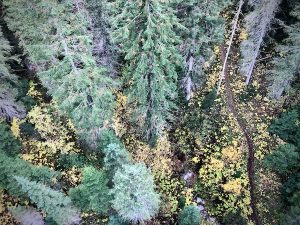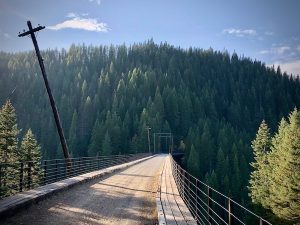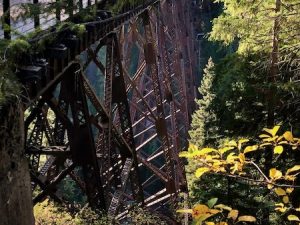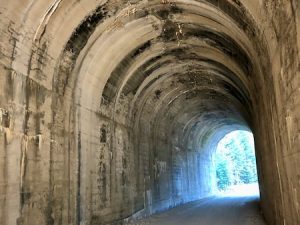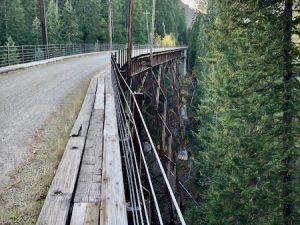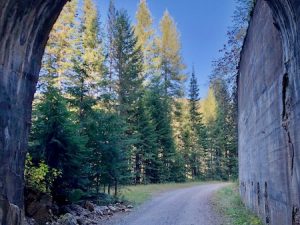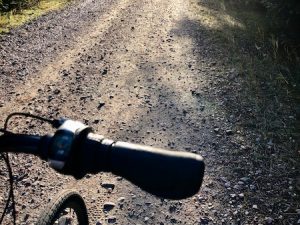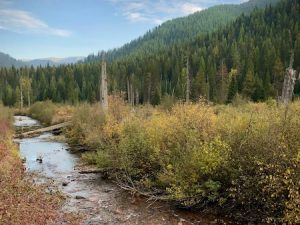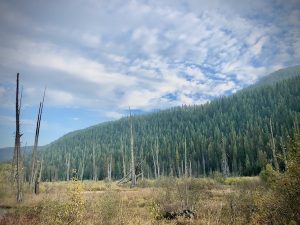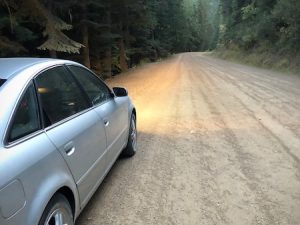Where’s the Funny? Newsletter
Q1 March 2021: Volume 9
EDITOR'S DESK: THE (COVID) ROAD LESS TRAVELED
I’ve read several stories about how the COVID-19 global pandemic has all but ruined travel. If you’re talking about leisure air travel to places outside the United States – or simply driving to Canada – I would tend to agree. With mandatory quarantines and tests both to and from many international destinations, why bother. And although smaller crowds in Venice, Italy, for example, might be tempting, what’s the point if nothing there is open?
Alternatively, to those who say domestic travel here in the United States is dead, I say, “Poppycock!” Or even “Balderdash!” Executive orders (at the state level) aside, there really are no physical barriers. Hotels and gas stations are open. Most restaurants and supermarkets, too. If you are willing to travel during a pandemic, there definitely is a way.
No doubt, a certain amount of caution is required. And some common sense. Masks? Check. Hand sanitizer? Check. And there’s definitely a need for more pre-planning – especially when it comes to attractions. What museums are open? How about visitor centers at state and national parks? Will there be any rangers on site? Are trails open? What about the roads? An outbreak of COVID among the Blackfeet tribe closed the eastern half of Glacier National Park – including key entry points and a portion of the famed Going-to-the-Sun Road – for an entire year.
Journalist and author Eric Weiner writes about about travel as an “essential human activity.” I tend to agree. Even in a pandemic, I am still human. And I can think of no other time in my life where there has been a more truly universal experience, shared by all.
But while we all may be in this situation together, I still retain the right to preserve my individuality. And on my road trip west – even behind a mask – I find that I am not alone. After months locked up, there are plenty of people who want to connect. Who NEED to connect. On a trail. In a library. At the drive through window. I can’t imagine this trip without the many encounters, such as:
- Mark, the Portland, Oregon, massage therapist who happens to be sleeping in his Prius in the exact location where I broke down, near West Yellowstone. He gave me an 11-mile lift to the service station, no questions asked. And then I ran into him – I recognized the “Dump Trump, Ditch Mitch” bumper sticker – several days later in Yellowstone National Park. Crazy.
- Roger, the stone and tile mason, I meet just after midnight at the Best Western bar in Bozeman, Montana. Roger had a date in court to clear up some undisclosed financial matters. While he’s waiting for the 3:30 am bus to Butte, he regales me with tales of the stone work at celebrity homes from Jamie Lee Curtis to Howie Mandel.
- Doug and Mary Ellison, who run the Amble Inn and Western Edge Books in Medora, North Dakota. Mary tells stories of North Dakota booms and busts. The lack of housing in the oil field towns such as Williston and Watford City was such a problem, there were people who secretly lived underneath trailers and diverted heat from above to stay warm. The interlopers were discovered, Mary says, when the occupants of the trailer above became so cold they had to investigate.
Then there is Dominique, the wildlife photographer from Bloomington, Minnesota, who watches me pull road kill from underneath my car and later (after I wash my hands) joins me for dinner at Boots Bar & Grill in Medora. And the two Latinas from Cincinnati, who drove 24 hours straight to get to Glacier National Park. One works at US Bank, where my dad worked for a decade, and the other is at Cincinnati Children’s Hospital, where my sister put in 30+ years as a speech pathologist. What are the odds? On a random trail? In Montana?
Yes, even behind a mask, it’s possible to connect with a person – especially a fellow traveler who, like me, usually is more than happy to take a break and have a chat. You never know what you may discover.
And yes, the topic of COVID-19 is a strong presence wherever I go – almost impossible to avoid. But by no means will it define my 2020. I won’t let it. I’m not going be one of those people who looks back and says, “2020 was the worst year ever.” It has been difficult at times. For a single person, the aloneness certainly can be oppressive. But I am bigger than any pandemic. I will create my own memories. And write my own story.
QUOTE:
“Two roads diverged in a wood. And I –
I took the one less traveled by,
And that has made all the difference.”
– Robert Frost (1874-1963), from “The Road Not Taken” (1916)
WTF? NEWSLETTER
LIBRARY 3.0: FAB LABS + MAKER ROOMS SPARK YOUNG (AND OLD) MINDS
I love libraries. Or maybe I love librarians. Those library scientists who can make order out of universal chaos and shush you in the same breath. On the road, I seek out libraries when I need to write. They’re clean, quiet and comfortable. They usually have great wi-fi. And they have some of the most knowledgeable tourist advisors in town: the librarians.
There’s also something very Main Street USA about libraries: Every small town seems to have one. Or access to one. Really, to me the library is a cornerstone of the entire nation’s educational system. Even during COVID times, libraries are free to use and (mostly) open, albeit maybe with limited hours.
Did you know in 1731 Benjamin Franklin helped to establish the first lending library? The Library Co. of Philadelphia is still open today. And, according to a 2016 Institute of Museum and Library Services (IMLS) survey, there are an estimated 119,487 in the United States, including 9,057 public, 3,793 academic, 98,460 school, 6,966 special, 252 armed forces and 934 government libraries. I wonder if the IMLS knows those numbers don’t exactly add up? That’s just my inner library scientist talking.
Anyway, on this writing day in Idaho, I walk into the Boundary County Library in Bonners Ferry (pop. 2,595 in 2018; approximately 11,000 in the area), which is just a tad more than 30 miles from the Canadian border. I go downstairs to a secluded area. Something catches my eye. A 3D printer. What the hell is a 3D printer doing in a public library? In Idaho!?
Welcome to the Boundary County Library’s FabLab, a truly fabulous place where you can create almost anything – and it’s free! In addition to 3D printing, the “makerspace” features precision vinyl cutting, a milling machine, a laser for engraving and software to help learn CAD (computer aided design), animation and graphic design. There are classes and online tutorials to help anyone with an interest get started.
Apparently, libraries need to continually reinvent themselves to stay relevant, just like everything else in the 21st century. What’s a FabLab? Thanks to the Boundary County Library, now I know.
LISTICLE: COVIDETOUR2020 FUN FACTS
- Car miles: 6,145 total, including 537 in a Toyota Camry rental car from Enterprise with the “Dealer Service Required” indicator light on the entire time and the “Underinflated Tires” warning light on – just as I am about to leave Cody, Wyoming, for the return trip through the treacherous, snowy Sylvan Pass in Yellowstone National Park. NOTE: Air is not free in Cody, if you can find it.
- Steps / distance: 333,914 for 168.6 miles
- Number of snack bars consumed: 160 – that’s 100 Quaker Chewy granola bars (peanut butter chocolate chip, chocolate chip and s’mores flavors, 100 calories), 41 Nature Valley Crunchy Oats ‘n Honey granola bars (190 calories) and 19 Kind bars (salted caramel, dark chocolate almond, 180 calories)
- States: 10 (Illinois, Michigan, Wisconsin, Minnesota, North Dakota, Montana, Idaho, Wyoming, South Dakota and Iowa) – all on Illinois’ COVID-19 quarantine list
- Number of hotel nights: 34 across 18 hotels, including several Best Western properties, which I like because it’s an independent membership of diverse hotel properties and not a “cookie cutter” franchise. I also stayed at Baymont Inn & Suites, La Quinta and Days Inn (Wyndham brands); Comfort Inn & Suites and Quality Inn (Choice); Fairfield Inn & Suites, Towneplace Suites and Element by Westin (Marriott) and several independent hotels, such as the Amble Inn in Medora, North Dakota; the Mammoth Hot Springs Hotel & Cabins in Yellowstone National Park, Wyoming; the historic Silverado Franklin Hotel in Deadwood, South Dakota; and, the North Idaho Inn in Coeur d’Alene, Idaho
- Number of camping nights: 5 (three at the Apgar Campground in Glacier National Park in Montana and two at the CCC Campground outside the North Unit of Theodore Roosevelt National Park in North Dakota)
- Hiking miles: 64.11 on 22 hikes ( > 1 mile)
- Biking miles: 42 (17 around Lake Itasca State Park; 11 on the Hiawatha Trail near Wallace, Idaho; and, 14 on the Centennial Trail in Coeur d’Alene, Idaho)
- Dams visited: 6 (Fort Peck Dam – the largest earth dam in the world –in Glasgow, Montana; Hungry Horse Dam, Montana; the Buffalo Bill Dam and Corbett Diversion Dam, near Cody, Wyoming; the Pactola Dam, near Rapid City, South Dakota; and, the Dixon Dam on the Rock River in Dixon, Illinois
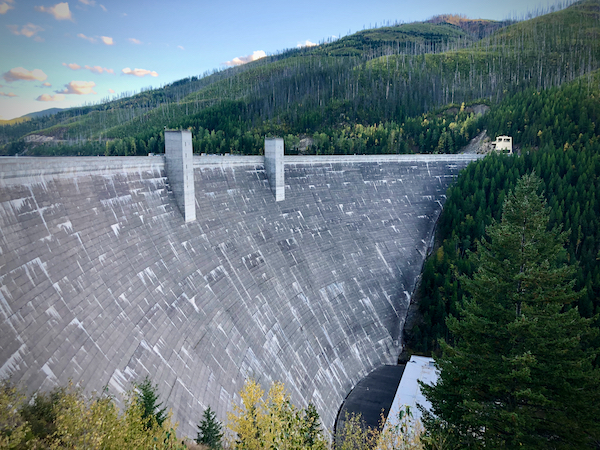
- National Parks visited: 4 (Theodore Roosevelt National Park – North and South Units, North Dakota; Glacier National Park, Montana; Yellowstone National Park, Wyoming; Wind Cave National Park, South Dakota
- National Monuments visited: 2 (Devil’s Tower, Wyoming –the first National Monument, as declared by Teddy Roosevelt, and the Little Bighorn Battlefield in Montana)
- State Parks visited: 3 (Lake Itasca State Park, Minnesota; Farragut State Park, Idaho; Custer State Park, South Dakota)
- World’s Largest: 4 (Ball of Sisal Twine Made by One Person, in Darwin, Minnesota; Buffalo Monument, in Jamestown, North Dakota; Earth Dam, at the Fort Peck Dam, Glasgow, Montana; and, (the one and only) Corn Palace, Mitchell, South Dakota. Honorable mention (U.S. only): The Pine Mountain Ski Jump, Iron Mountain, Michigan.
- Presidential homes: 4 (the Teddy Roosevelt ranch and cabin near Medora, North Dakota; the Calvin Coolidge Summer White House in Custer State Park, South Dakota; the birthplace of Herbert Hoover in West Branch, Iowa; and, the boyhood home of Ronald Reagan in Dixon, Illinois)
- Celebrity sites visited: It may look like an office park on the outside, but it’s really Paisley Park, where pop music icon Prince lived and worked, in Chanhassen, Minnesota; the John Wayne Birthplace & Museum, where the legendary actor was born and learned to crawl (and not much else), in Winterset, Iowa; the graves of General George Armstrong Custer at the Little Bighorn Battlefield in Montana (although he supposedly was reburied at West Point, New York – no one knows for sure whose bones they are) as well as Wild Bill Hickok and Calamity Jane in Deadwood, South Dakota; and Buffalo Bill’s Irma Hotel, which Cody, Wyoming-founder Buffalo Bill (aka William Frederick Cody) built for his daughter
- Celebrity sites NOT visited: Kanye West’s Monster Lake Ranch near Cody, Wyoming, or the Gozzer Ranch Golf & Lake Club, which attracts celebrities such as Harry Styles, Alex Rodriguez, Wayne Gretzky, Demi Moore, Jay Z and a whole slew of so-called “A-listers.” Run away!
- Cost to tow a car 92 miles from West Yellowstone to Bozeman, Montana: $651
- Cost of insurance that covers a car tow of up to 100 miles: $4.50 (State Farm)
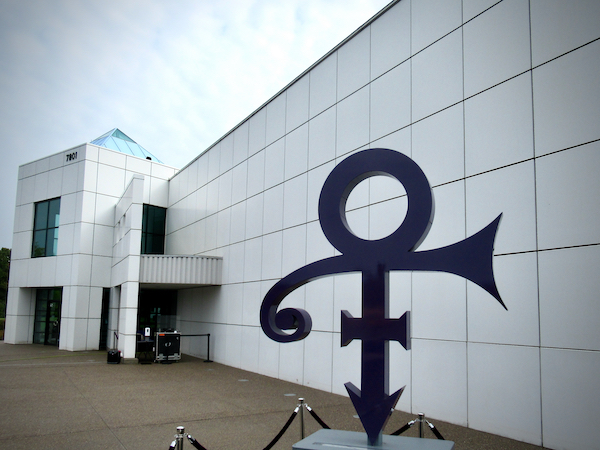
IN PRACTICUM
NEW BALACE X-WIDE TRAIL RUNNERS: My feet thank you
Taking liberties with an old Scandinavian mantra, “There is no such thing as bad hiking, only bad shoes.” The Arizona cactus spine in my foot taught me the lesson about hiking in running shoes – especially really, really old, thin-soled running shoes. No more. On the advice of a super outdoorsy, ultra marathon running, ice climbing survivalist former work colleague, I am now an official advocate of the trail runner. These are low-cut and look like running shoes, but the soles are tough – for more durability and greater protection.
My friend basically says, “If you don’t have bad ankles, then you don’t need to wear boots.” The lighter, smaller profile is much more comfortable – to me, at least. And, if you want, you still can get the benefits of rugged, reinforced toes and waterproof Gore-Tex® (although you may sacrifice some breathability).
I’m totally brand loyal to (mostly) Made-in-USA New Balance, which offers extra-wide models for flat-footed size 13s like me. For the road trip, I first order the New Balance 978, which look the most like a rugged, low cut leather hiking boot. Upon arrival I find them to be way, way small, which is an excellent life lesson for a person ordering shoes over the internet for the very first time: Pay close attention to the “True to Size” and “Overall Fit” areas of the reviews. The shoes I selected were rated as “Runs small.” Normally, a size 13 is a little loose for me, so I thought I would be OK to order that. I simply could not get my mind around ordering a size 14, which just seems way to big. Lesson learned. Shoes returned.
So now I’m actually about to depart on the trip, and the pressure is on to get the next order right. If you’re asking, “Why don’t you just friggin’ go to the New Balance store?” My answer is, “Because no one carries size 13s in their store.” And they also don’t carry every model you see online. So there! I throw caution to the wind and order not one, but two pairs of “True to Size” shoes and have them shipped to a friend in Minneapolis, where I would be in about a week. I wouldn’t be hiking until after Minneapolis and, if the shoes did not fit, I could have my friend return them. And I would just fall back on my running shoes, which I had replaced. See how tremendously logical I am?
I send multiple texts to my Minneapolis friend: “Did the package arrive yet? Did the package arrive yet?” Finally, a “Yes”! The first shoes, the New Balance Fresh Foam Arishi Trail, slip on like a pair of slippers. So light and so comfortable that I can hardly tell they’re on. But still, there’s a rugged sole and reinforced toe. These will be perfect for easy, shorter hikes of say, one to three miles. What they may lack in support is make up in comfort. And at US$69.99 (at the time), they are super cheap.
The second pair, New Balance 1450, are strong and sturdy. They are definitely made for the long hauls, with rock resistant soles and Gore-Tex® for water protection. I break them in with a couple of five milers, then work my way up to seven to 10+. These are clearly built for longer distances and to be worn all day. Because of the rigidity, it takes a few hikes, but they get more comfortable with each passing mile. And even though they are low cut, I’ve been using them lately in the Chicago snow. They’re not 100 percent waterproof, but they’re good enough. Mission accomplished.
NOTE: The links are for Mens models only, however the Fresh Foam Arishi Trail is available in a Womens model. The New Balance 1450 appears to be no longer available on NewBalance.com. But they are on Zappos.com and elsewhere. Also, I am not paid in any way to endorse this or any other product in this newsletter.
QUICK SPINS:
PORTABLE POWER: A cure for the camping-with-sleep-apnea blues
The first thing I ask the doctor who makes my sleep apnea diagnosis is, “Will I ever camp again?” Not really, but I do enjoy the outdoors. And being tethered to a CPAP machine at night is cause for some concern. But there is hope.
Several CPAP manufacturers, such as ResMed, market portable battery systems or travel packs for their machines. They typically are very expensive and don’t provide more than one night of power. That’s not a solution.
I want something that will provide power for at the very least two full nights and ideally three. Enter Jackery, a California-based company started by former Apple engineers. Jackery offers the Explorer series of lithium batteries in five sizes: E160, E240, E300, E500 and E1000. The units, a little bit bigger and heavier than your typical car battery, are not cheap. But they are quiet and efficient. The current “on sale, 15 percent off” prices range from $118.99 to $849.99.
I paid $520.90 ($499 + tax) for the E500 – the smallest unit with enough power for a CPAP – and had it shipped to the Amble Inn in Medora, North Dakota – just in time to charge it at the hotel and then test it out the next few days camping at Theodore Roosevelt National Park.
(Continues to next column … )
CARTOON: It's BLIP!
(PORTABLE POWER continued)
The first night using it with my AirSense 10 machine, the battery power indicator went down to 45 percent after 7 hours of use – not good. Am I not even going to get two nights out of this thing? It was the first time using it, so I went ahead and charged it back up to 100 percent using the car charger. This is a great feature, because whenever I drive (which, as one who likes road trips, is often), I have the option to recharge.
The second night, the battery indicator remarkably only goes down to 68 percent – enough power for the next night – and there is still plenty of juice left to charge my phone. For nights three through five in my tent, the performance exceeds my expectations. Success!
To recap, the best things about the Jackery Explorer 500 are: 1) You definitely get more than two 7-hour nights of CPAP power; 2) You’re able to charge it in a car; 3) It has multiple ports, including a single AC out, one DC out and three USBs; and, 4) There’s even a solar panel accessory, the SolarSaga 100W (on sale at $254.99), if you really want to get off the grid.
NOTE: I am not paid in any way to endorse this or any other product in this newsletter.
WEARABLE WORKHORSE: Garmin's solar-powered Instinct® series watch
When my beloved Motorola MOTOACTV smartwatch finally died in 2018, I went without for a time. But with a naked wrist and an obsession for counting steps, I knew it would only be a matter of time before I took the plunge again. But, with so many choices, what to buy?
I looked at the Fitbit and the Apple Watch, but I wanted something bigger – stylishly clunky – and more powerful. And, most importantly, I wanted something with a long battery life. Something I wouldn’t have to charge every day on my travels.
Enter the Garmin Instinct® Solar (full price, $399). Depending on the settings and the sun, this smart watch can last for weeks between charges or forever when powered by the sun. It’s military grade, with a scratch-resistant Corning® Gorilla® glass and a fiber reinforced polymer case.
Just check out the specs for a taste of what this wearable can do. Like access multiple satellite navigation systems (e.g. GLONASS and Galileo) – not just GPS. It has a built-in altimeter, barometer and compass. And it’s got something called Tracback®, which allows you to retrace your steps to a point of origin and never (theoretically) get lost.
The Garmin Instinct has all the preloaded activity apps one would expect (e.g. hike, bike, run, walk, swim etc.) as well as an array of health monitors. It can’t drive a car, but it does come in a lot of pretty colors and, yes, it also counts steps.
NOTE: I am not paid in any way to endorse this or any other product in this newsletter.
PHOTASTIC! THE HIAWATHA TRAIL, near Wallace, Idaho
“And don’t forget the Hiawatha Trail!” – that’s what the mother in the Indiana family of four shouts to me from their van on Going-to-the-Sun Road in Glacier National Park. We met hours earlier, on one of the trails, where I asked if they would recommend some things to see and do in nearby Idaho. They made several suggestions, turning me on to the awesome and heretofore unknown (to me) town of Coeur d’Alene. But they forgot one thing – their absolute favorite – the Hiawatha Trail. So, when they saw me on the road, they just had to make a U-turn to tell me about this one amazing bike trail.
What’s so amazing about the Hiawatha Trail? It’s a rails-to-trails project, running 15 miles through the Bitterroot mountains from the Idaho-Montana border to Roland and then Pearson, Idaho. It includes 10 tunnels – including a pitch-black one that’s 1.6 miles long – and seven high trestles. Oh, and did I mention, the trip is entirely downhill. I repeat, entirely downhill! That is, if you get on at the right spot.
It’s after Labor Day and off season, so I am not on a tour. The brah at the Vertical Earth cycle shop in Coeur d’Alene says he’s “pretty sure” I can access the trail on my own via a dirt logging road out of Wallace, Idaho. Then, the dude at the Wallace District Mining Museum says he is “absolutely certain” that the trailhead is 6.8 miles away, on the road over Moon Pass. He is so positive about this distance that he writes it down on my map and circles it. But do not believe him. At eight miles, as the panic sets in, I wave down a truck. The man laughs and says, “You’re less than half the way there.” In total, it’s actually 19 miles on that gravel, pock marked logging road.
The Moon Pass route from Wallace actually takes you to the trail’s end, so I am at the bottom. Luckily, it’s only a 1-2 percent railroad grade, so I huff and puff for about 45 minutes and six of the 15 miles uphill. It’s already late afternoon and there’s no way I’m driving those 19 miles back to Wallace in the dark. But six miles is just enough for three tunnels and two trestles (see photos below) … and an incredibly satisfying, no peddling whatsoever, short trip back down to my car. The lesson here: If you can’t take the tour or you don’t want to (pay), make sure to give yourself plenty of time. Arrive early – not, like me, at 3 pm. There’s 15 miles of trail to enjoy, and you’ll not want to miss an inch.
QUESTIONS OR COMMENTS?
First, thank you for reading this newsletter. If you have any questions about anything that appears here, please do not hesitate to contact me directly via email at: hello@wheresthefunny.blog.
PREVIOUS NEWSLETTERS
- Where’s the Funny? Volume 1 (November 2019)
- Where’s the Funny? Volume 2 (December 2019)
- Where’s the Funny? Volume 3 (January 2020)
- Where’s the Funny? Volume 4 (February 2020)
- Where’s the Funny? Volume 5 (March 2020)
- Where’s the Funny? Volume 6 (April 2020)
- Where’s the Funny? Volume 7 (May 2020)
- Where’s the Funny? Volume 8 (June 2020)

